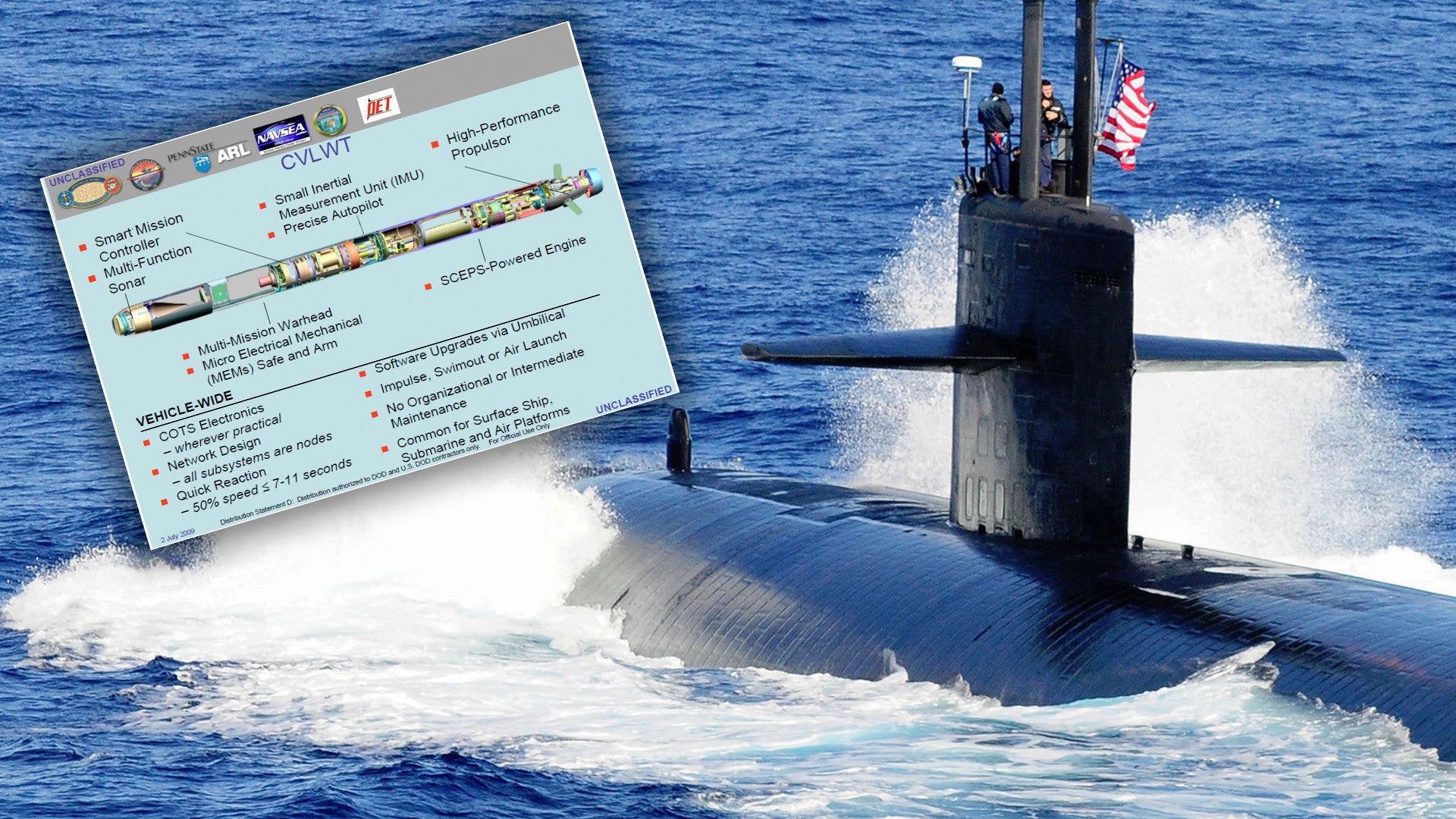Tucked away in its most recent budget proposal, the U.S. Navy says that it is interested in giving its submarines the ability to launch small torpedoes. These weapons could offer added offensive firepower, as well as an all-new anti-torpedo defense interceptor capability. The mini-torpedos use a common body and future variants might also arm unmanned ships or submarines, as well as flying drones, act as naval mines, and more.
The Navy’s budget request for the 2020 Fiscal Year, which came out in February 2019, asks for more than $60 million to support the continued development of the AN/BYG-1 Submarine Payload Control System. Virtually all of the service’s existing submarines use variants of this software-driven combat control architecture to launch weapons and other payloads, via combinations of torpedo tubes, vertical launch systems, or countermeasures launchers, depending on the particular design. The Navy’s future Columbia-class ballistic missile submarines and Block IV and V
Virginia-class attack boats, as well as Australia’s future Attack-class, will also use versions of this system.
The funding for the 2020 Fiscal Year will go toward continuing work on the Advanced Processing Build 19 (APB19) software upgrade and updates to add other capabilities, known as Technology Insert 20 (TI-20). The Navy also says that the development of APB19 will support the early integration of new payloads, such as the improved anti-ship variant of the Tomahawk land attack cruise missile and improved decoys to confuse and distract incoming torpedoes.
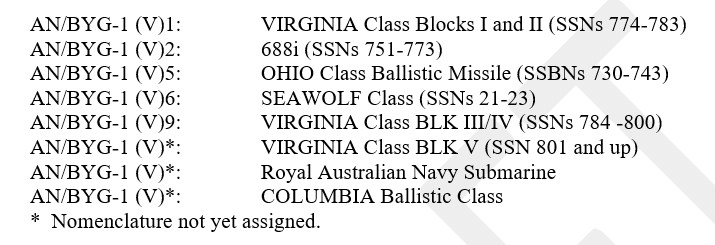
But the budget line also specifically mentions an “Anti-Torpedo Torpedo Compact Rapid Attack Weapons program (ATT CRAW)” as a possible new payload to integrate into the AN/BYG-1’s control systems. When asked, the Navy would not officially confirm that there are fixed plans to add either an Anti-Torpedo Torpedo or a Compact Rapid Attack Weapons capability to its submarines.
“At this point in time this effort is pre-decisional,” William Couch, a spokesperson for Naval Sea Systems Command, told The War Zone by Email. “We are investigating options to transition efforts that were executed under the ATTDS [Anti-Torpedo Torpedo Defense System] Program and other RDT&E [Research, Development, Test and Evaluation] efforts in support of the Compact Rapid Attack Weapons.”
For more than a decade now, the Navy has been working on what it has referred to in the past as the Common Very Lightweight Torpedo (CVLWT). The core of the CVLWT is a “chassis” that can accommodate warheads, guidance packages, and other systems optimized for certain roles.
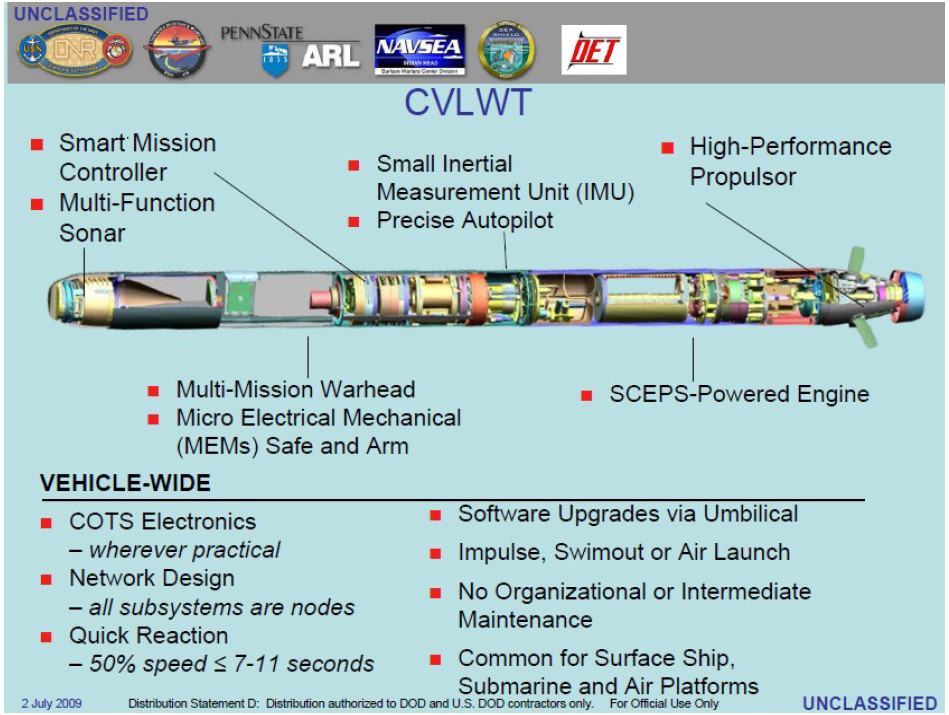
The mini-torpedo has a Stored Chemical Energy Power Systems (SCEPS) power system for its propulsor in the rear. SCEPS works by bathing a solid block of lithium in sulfur hexafluoride gas, creating an extremely energetic chemical reaction that, in turn, produces steam to drive a turbine engine. In use in torpedoes for years already, this helps make the smaller CVLWT accelerate very fast, reaching fifty percent of its unspecified top speed in less than 12 seconds on average.
At six and three-quarters inches in diameter and approximately 85 inches long, the CVLWT is significantly smaller than the latest variants of the Navy’s Mk 48 heavyweight torpedo, which is the standard weapon of this type for its submarines now. The Mk 48s are around 21 inches in diameter and 228 inches long. The mini torpedo’s typical weight, around 220 pounds, is also more than 16 times lighter than its heavyweight counterpart. So we are truly talking about a tiny torpedo here.
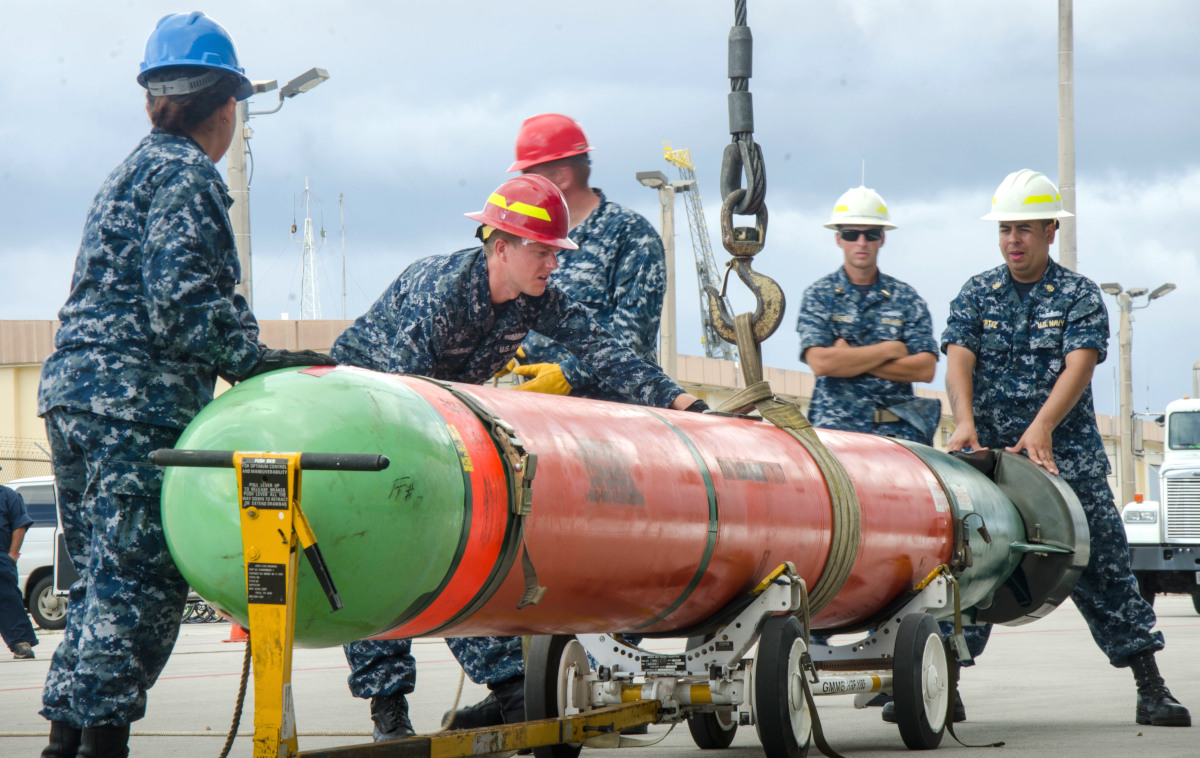
The Navy has already developed multiple variants of the CVLWT, the best known of which is the Countermeasure Anti-Torpedo (CAT), also called the Anti-Torpedo Torpedo (ATT). This is a defensive “hard-kill” interceptor that is supposed to destroy incoming torpedoes by either slamming into them or destroying them with its explosive warhead.
The interceptor also features a sonar seeker capable of operating in active and passive modes, together with a guidance package that also includes an Inertial Measuring Unit (IMU). The IMU provides data that allows the torpedo to make more precise movements, making it more maneuverable and improving its accuracy.
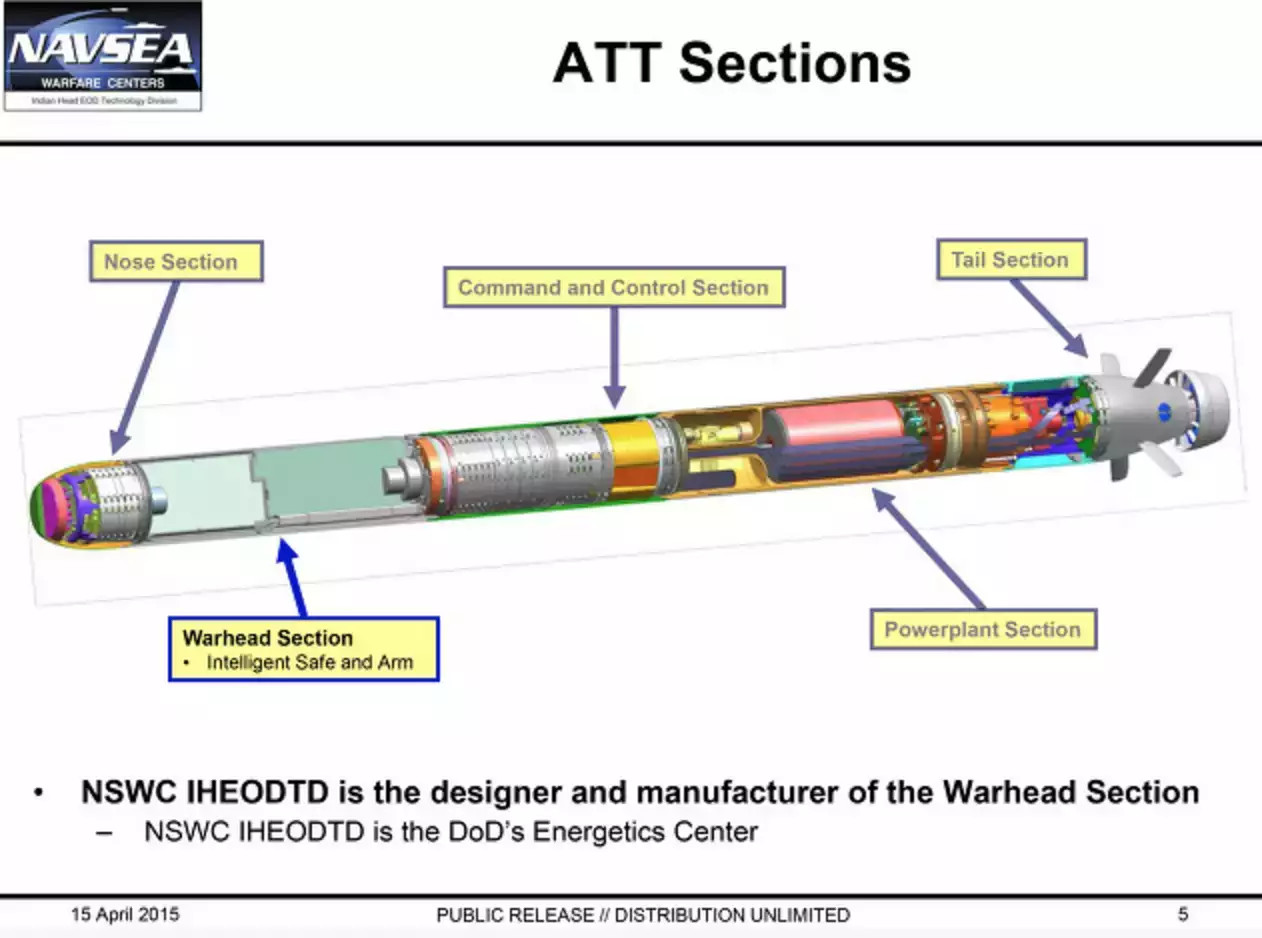
The Compact Rapid Attack Weapon (CRAW) has much of the same hardware, the bulk of which consists of Commercial Off-The-Shelf components to help keep production costs and maintenance requirements low, according to public Navy briefings and other documentation, but is optimized as an offensive weapon against other submarines. Both variants could offer important capabilities for various American submarines.
At present, American submarines use a combination of electronic warfare jammers and acoustic decoys to defeat incoming torpedoes. This works well against threats that use active and passive sonar to home in on their targets.
More advanced torpedoes, however, which feature sensors to detect differences in water density to zero in on the wake a ship or submarine churns up as it moves, are immune to acoustic decoys and are jamming resistant. These wake-homing torpedoes have been a major impetus for the Navy to develop a hard-kill anti-torpedo interceptor in general, especially for high-value ships, such as aircraft carriers. In recent years, concerns about existing and future torpedo threats have similarly led to a push to add a torpedo interceptor capability to submarines, according to The War Zone’s trusted sources.
But the anti-torpedo torpedo concept remains very much in development. In September 2018, the Navy formally halted work on the Anti-Torpedo Torpedo Defense System (ATTDS) for surface ships. The service had already installed examples of this system on five Nimitz-class aircraft carriers and is now removing all of them.
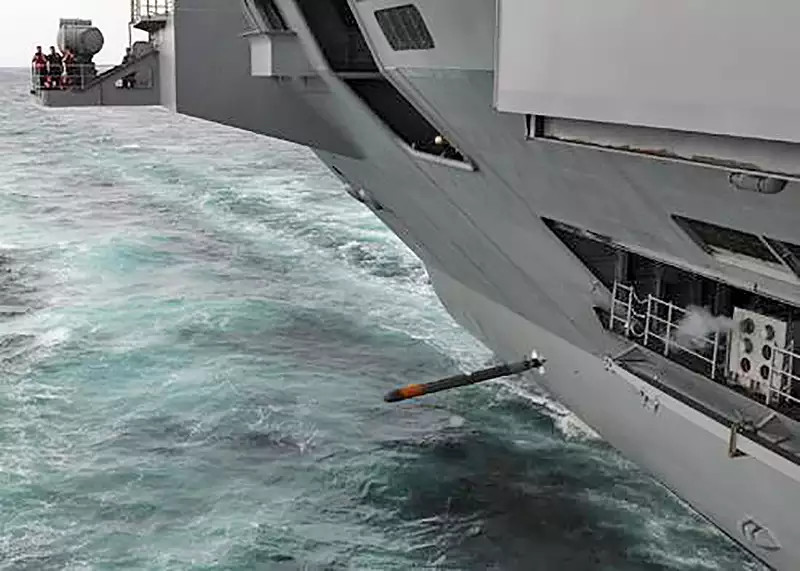
So far, the biggest problem for the ATTDS has been creating a kill-chain short enough for the interceptor to be effective. The system needs to spot and classify the threat and then cue the anti-torpedo torpedo in a very short amount of time. The small size of the interceptor means that even if it employs its explosive warhead, rather than functioning in a hit-to-kill mode, it still has to get relatively close to the target to be effective.
In addition, at least some existing wake-homing torpedoes already employ tactics that could throw off interceptors. The latest variants of the Russian Type 53 series zig-zag toward their target in their terminal phase, making them harder to track or target.
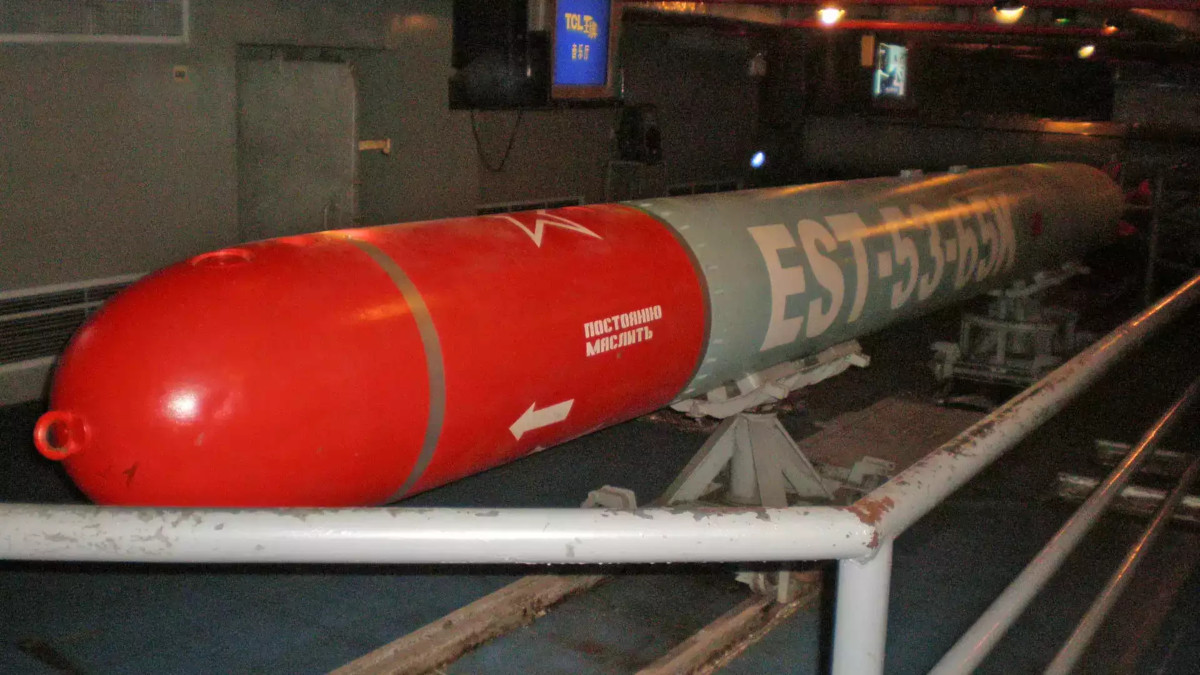
This doesn’t mean that the Navy couldn’t still add an anti-torpedo interceptor capability to its submarines in the future. As noted, the service says it is still considering doing just that and there is clearly a requirement for this kind of defensive system.
But this is also where the CRAW comes in. As an offensive weapon, the mini-torpedo could give submarines added magazine depth and additional flexibility, especially to engage smaller targets, such as unmanned surface or underwater vehicles.
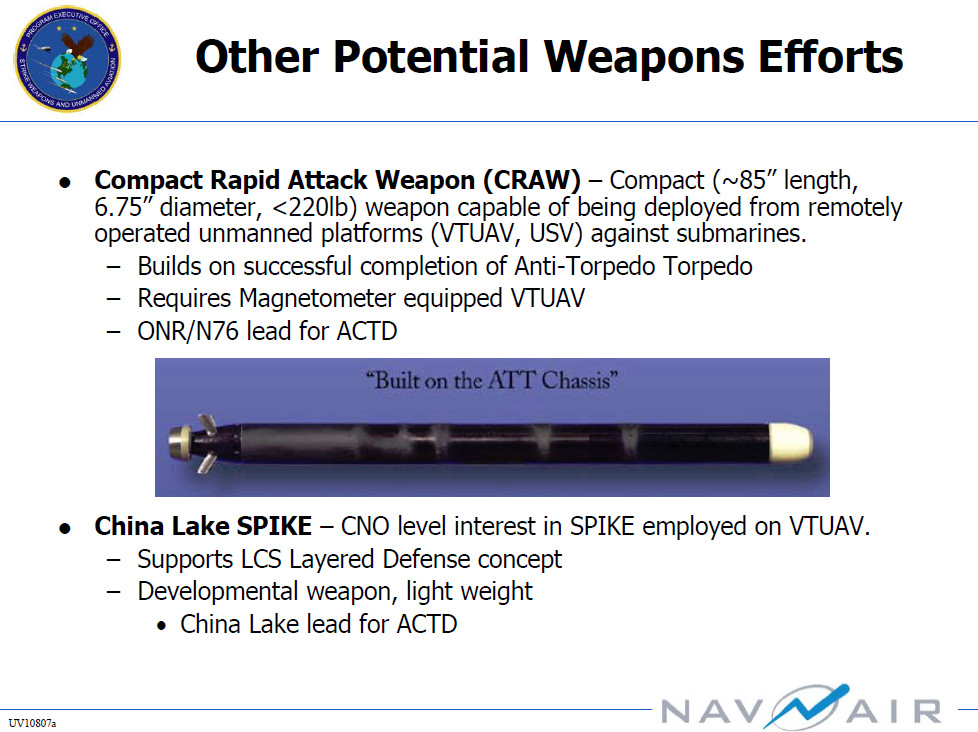
Based on the physical dimensions of the CVLWT chassis, submarines could potentially carry at least four of these weapons in the same space allocated to a single Mk 48. The boat’s crew also wouldn’t have to expend one of those heavyweight weapons in order to attack a smaller target.
The smaller CRAW would still likely need something to stabilize it inside a U.S. submarine’s standard 21- or 26-inch torpedo tubes. It might be possible to develop a system that personnel could readily install and remove, as necessary, or to permanently modify a portion of the tubes specifically for the mini-torpedoes.
Another possibility might be a discarding frame that keeps the torpedo aligned in the tube and breaks off after launch, similar to high-velocity armor-piercing tank shells that use a sabot to stabilize a sub-caliber kinetic penetrator in the barrel. But this added bulk might limit the overall space-saving qualities of the mini-torpedo.
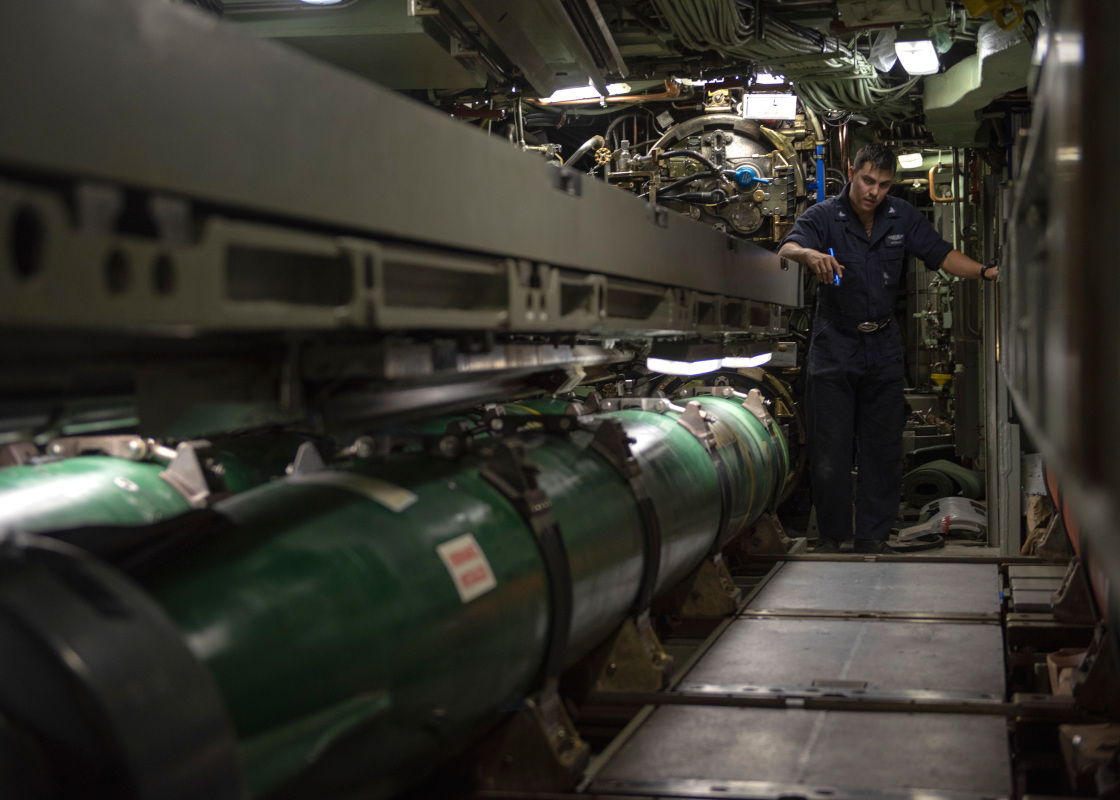
The Navy could pack larger vertical launch tubes full of the mini-torpedoes, too. The up-coming Block V Virginia-class attack submarines will have each have a Virginia Payload Module (VPM) with four launch tubes that are 87-inches in diameter and deep enough to accommodate a 246-inch long Tomahawk cruise missile with a booster rocket motor.
The standard loadout the Navy envisions is six Tomahawks in each of the VPM’s four tubes. Substituting even one of these for a cluster of CRAWs could significantly increase the boat’s magazine depth for anti-submarine or anti-surface operations. This could be particularly valuable for engaging swarms of enemy unmanned surface vessels or underwater drones in the future.
A single submarine could also launch a flurry of the mini-torpedoes at a single surface or sub-surface target, which would help overwhelm its defenses. The attacker could layer the attack with smaller weapons and a standard heavyweight torpedo, as well.
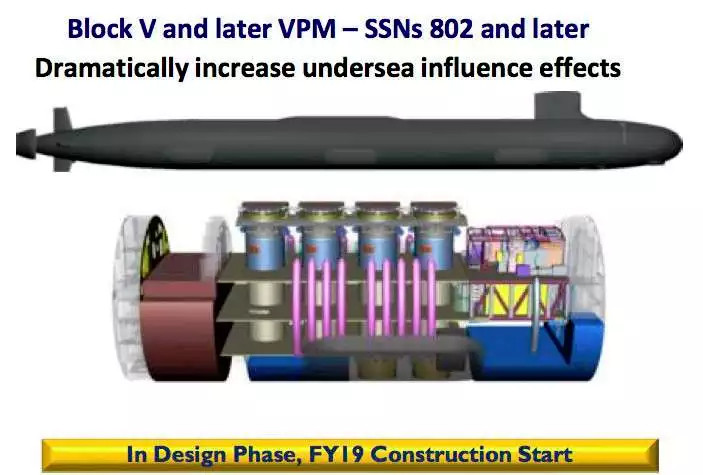
In addition, the Navy has noted that the CVLWT chassis may be compact enough to fit inside the launchers that submarines use presently to fire countermeasure decoys. Depending on the commonality between the anti-torpedo interceptor and offensive variants, this could enable subs to carry additional multi-purpose mini-torpedoes without having to trade out more standard torpedoes or missiles.
The size of the CVLWT opens up the possibility of more novel employment, as well. From the very beginning, the Navy has been interested in arming unmanned helicopters and underwater drones with these mini-torpedoes. During the service’s Annual Naval Technology Exercise (ANTX) in 2016, Northrop Grumman demonstrated how an unmanned helicopter might employ a CRAW autonomously against a hostile submarine using targeting data from multiple offboard sources.
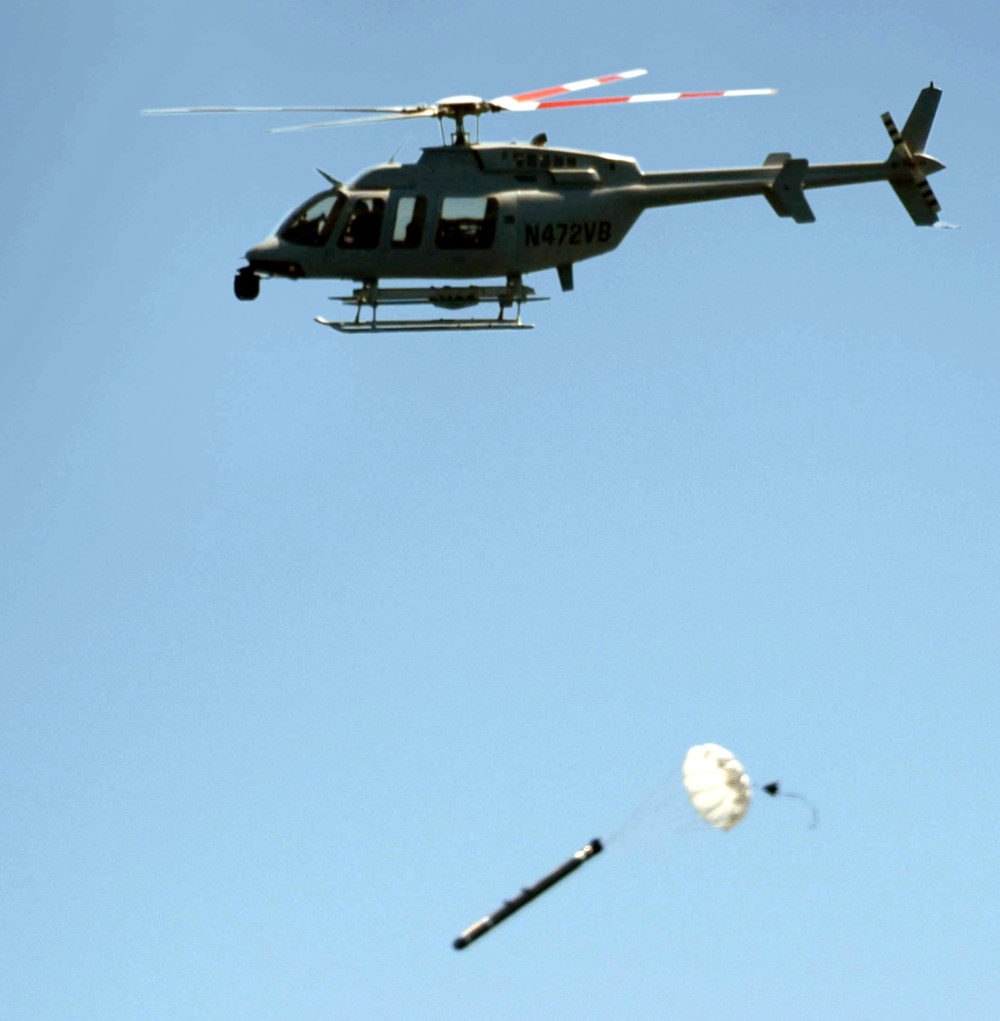
More recently, in February 2019, the Navy hired Boeing to build four extra-large Orca drone submarines, a stepping stone that could lead to improved designs capable of carrying out anti-submarine or anti-surface warfare missions using weapons such as the CRAW. You can read more about those efforts in detail here.
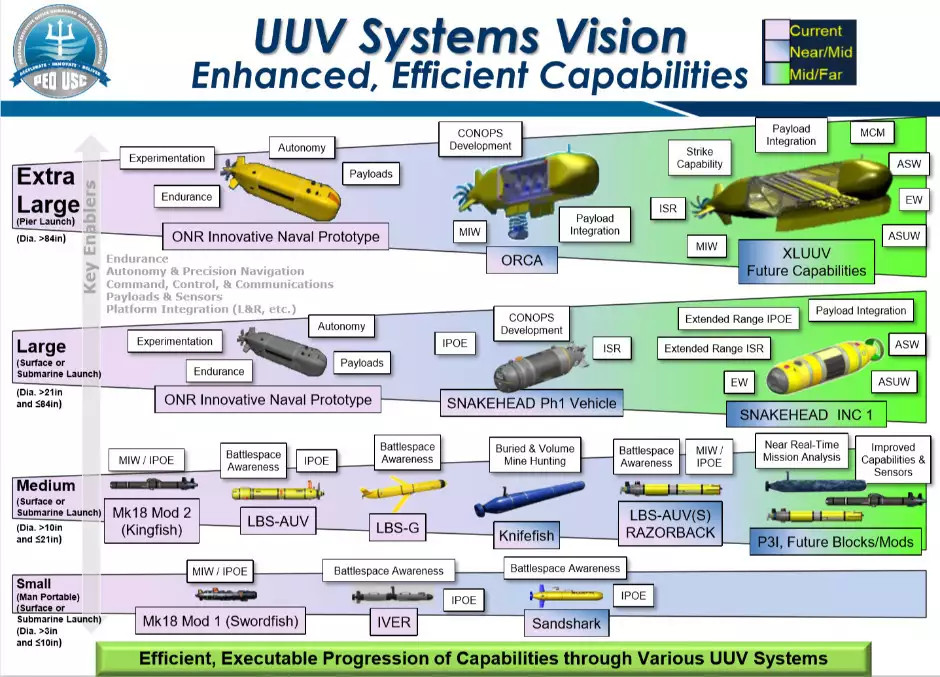
There’s the possibility that the Navy could use the CRAW as the basis for an underwater mine, too. The service already employs Mk 67 Submarine Launched Mobile Mine (SLMM), which contains a Mk 48 torpedo and anchors itself to the seabed after getting shot out of a torpedo tube. It then uses a passive sonar system to detect passing ships or submarines and then fires its homing torpedo at them.
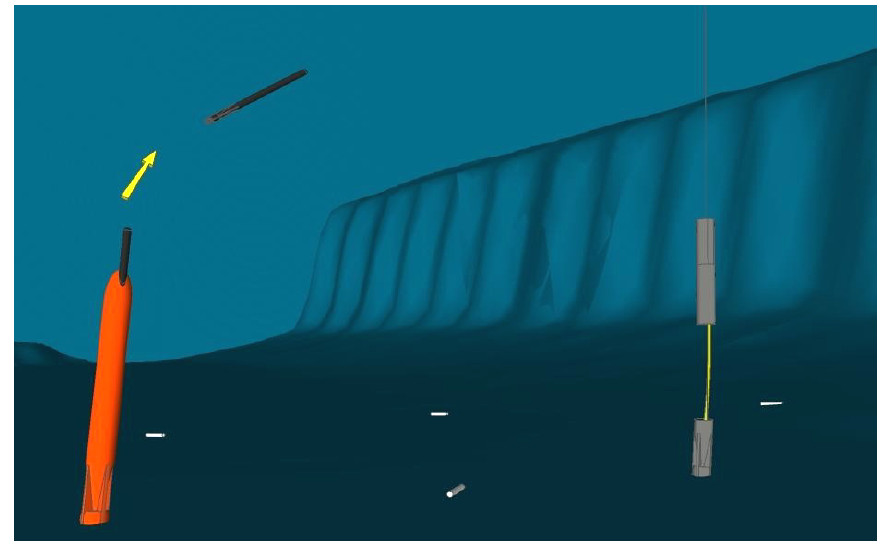
A smaller mine using the CRAW could be harder to detect and make it easier to rapidly lay larger minefields. A variant of the existing SLMM could potentially carry multiple mini-torpedoes and engage multiple targets, as well.
Since the CVLWT chassis offers significant scalability for a wide array of launch platforms, the Navy would have the option of combining some of these systems together in the future, as well. The service is already looking at developing new Large Payload Submarines that could serve as motherships for large underwater drones. Such a submarine could potentially deploy its own swarm of unmanned underwater vehicles armed with these mini-torpedoes.
With that common frame, the Navy might find it easier to integrate additional variants of the mini-torpedo down the road. Though the service appears to be focusing more on the CRAW version now, it could leverage that work to add an anti-torpedo interceptor capability in tandem to it as the technology necessary for that defensive system matures.
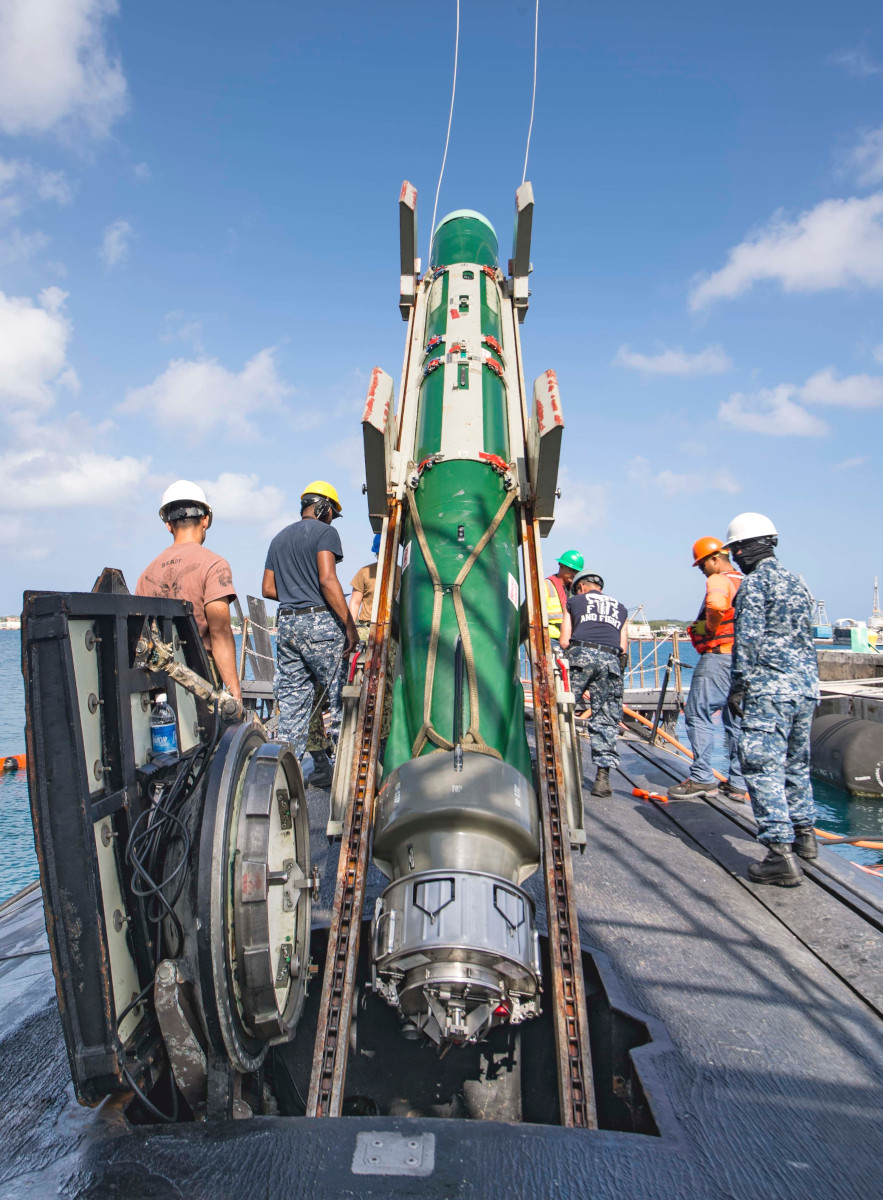
Integrating payloads based on the CVLWT with the AN/BYG-1 could also help attract interest from American allies, which could help defray the costs of continued research and development of various mini-torpedos and related systems. As noted, the Australians are already set to use this control system on their Attack-class submarines, which could also just improve their ability to work together and potentially share data with American submarines and other U.S. assets during combined operations in the future. In addition, the added magazine depth that the mini-torpedoes afford could be especially pronounced for smaller submarines that many American partners operate.
The Navy says it has yet to make a final, formal decision on adding mini-torpedoes to its submarines, or any other potential launch platforms, but it is still certainly working that direction. This is also only what the Navy will say publicly and the service could be further along on this project, or in the development of related capabilities, in the classified realm. We know the upgrade work on the AN/BYG-1 control system that is going on right now and that it wants to continue with that work into next year.
The inherently multi-purpose nature of the mini-torpedoes could transform the Navy’s undersea warfare operating concepts and being able to rapidly intercept a torpedo with another torpedo would be a game changer for American submarines. This revolutionary capability could very well be on its way to becoming a reality in the next few years.
Contact the author: joe@thedrive.com
